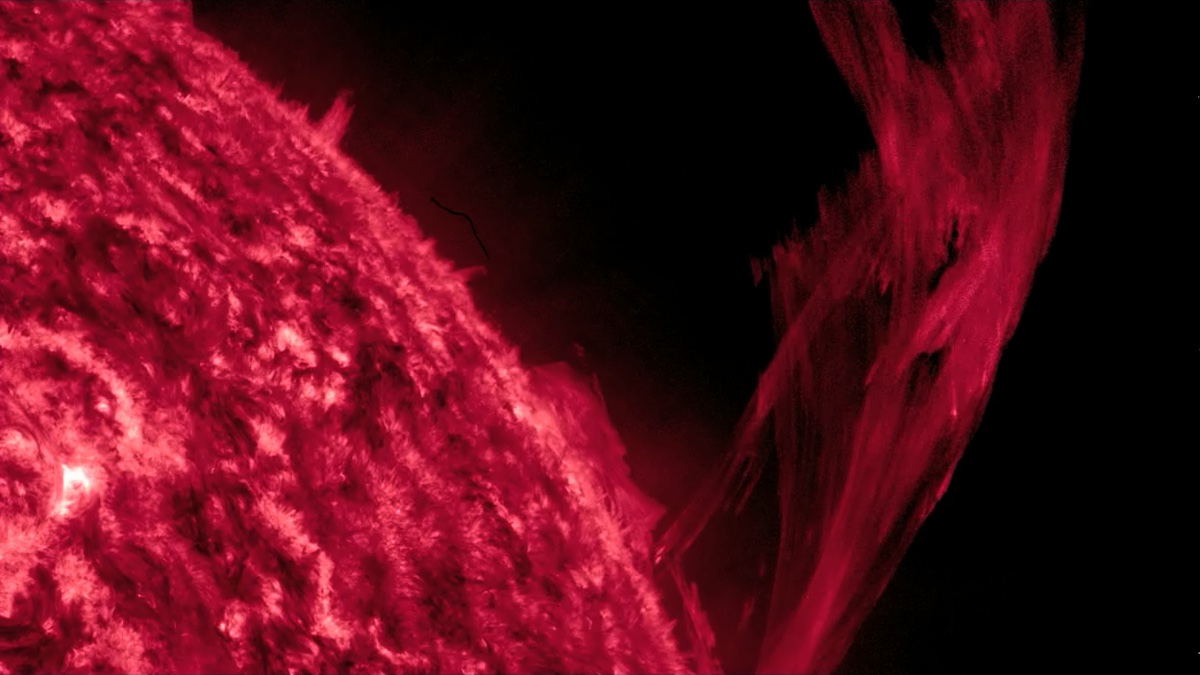
 Credit: NASA/SDO
Credit: NASA/SDO
Prominent Activity
Our Sun life-sustaining sun is, in actuality, a seething ball of hot, ionized gas powered by converting mass into energy through powerful thermonuclear reactions in its core. These thermonuclear reactions produce dangerous high-energy radiation, but these reactions are moderated by the immense mass of the Sun's interior, which allows pleasant visible-band radiation to emerge from the solar surface in a stable way for billions of years. There are, however, random explosions of radiation and subatomic particle which occur near the Sun's surface, produced by the release of energy stored in the Sun's tangled magnetic field. This magnetic energy waxes and wanes every 11 years, and at the present time we're near the predicted peak of this activity.
This heightened activity produces an impressive array of solar phenomena: highly magnetized sunspots which pimple the face of the Sun, powerful solar flares and coronal mass ejections of charged particles which can produce beautiful aurorae on earth (but which could also cause the downfall of civilization as we know it), and beautiful prominences. Prominences are extended regions of hot gas trapped by open lines of the Sun's magnetic field which can extend from the Sun's surface into nearby space. The image above shows a particularly beautiful example of a solar prominence from April 19, 2010, as viewed in extreme ultraviolet light by the Solar Dynamics Observatory (SDO). This was one of the largest prominences ever seen, but very transitory, lasting only a few seconds. Hot gas in the Sun's lower atmosphere, trapped in the magnetic field, bursts from the solar surface, and then most of the material falls back down onto the Sun. The current solar cycle seems particularly strong, and residents of North America have been treated to exceptionally bright northern lights stretching as far south as Oregon and Pennsylvania. Hopefully these extraordinary light shows are all we experience as we go through solar maximum.
Published: August 26, 2024
<
HEA Dictionary ● Archive
● Search HEAPOW
● Other Languages
● HEAPOW on Facebook
● Download all Images
● Education ● HEAD
>

Each week the HEASARC
brings you new, exciting and beautiful images from X-ray and Gamma ray
astronomy. Check back each week and be sure to check out the HEAPOW archive!
Page Author: Dr. Michael F. Corcoran
Last modified Tuesday, 03-Sep-2024 10:13:38 EDT


